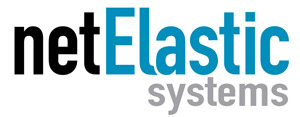Broadband service providers are increasingly requiring network equipment to be NEBS compliant. Why?
One reason is that subscribers are now depending on internet access for their professional and personal lives. And they’re relying on broadband providers to deliver this critical service. As a result, reliability has become paramount.
Bell Labs developed the Network Equipment Building Systems (or NEBS) requirements to ensure that network equipment would meet high standards for reliability. Today, NEBS is the most common set of safety, spatial, and environmental design guidelines applied to telecommunications equipment in the United States.
Network Disaggregation and the Importance of NEBS
The growth of network disaggregation is starting to hit an inflection point. With network disaggregation, service providers can independently select best-of-breed software and off-the-shelf hardware to build their broadband networks. By moving away from single-vendor proprietary solutions, providers can choose the hardware and software that best meets their needs, which increases flexibility and lowers costs.
The move towards disaggregated networks (with different hardware and software vendors), means broadband providers need hardware and software platforms that are reliable and are compatible with each other. NEBS requirements are designed to ensure just that.
These requirements, based on Telcordia standards GR-63-CORE and GR-1089-CORE, ensure reliability by specifying the extreme conditions these devices must work in, including temperature (hot and cold), humidity, altitude, and vibration (such as earthquakes). As a result, NEBS testing has become a required industry standard needed to assure service providers that equipment installed in their central office is compatible with other equipment and is reliable (even under adverse conditions).

Virtual Broadband Network Gateways (vBNGs) and NEBS Compliance
Network disaggregation is also impacting broadband network gateways, as broadband providers embrace software-based (or virtual) BNGs for greater scalability and lower costs.
What if a broadband provider wants a vBNG solution that is NEBS compliant? Where should they look?
Some providers may look at traditional router manufacturers, such as Cisco and Juniper. Both vendors are known for their good products. They’re also well known for their high costs. And you don’t have to spend a lot of money to get a leading vBNG solution that’s NEBS compliant.
Dell, Intel, and netElastic vBNG
Three companies delivering a cost-effective NEBS compliant vBNG solution are Dell, Intel, and netElastic. Dell offers NEBS compliant edge servers, such as the XR11. The Dell XR11 is a NEBS Level 3 compliant 1U server for telecommunications providers. Level 3 is the highest level of NEBS compliance.
The Dell PowerEdge XR11 server offers 4th Gen Intel® Xeon® Scalable processors, and it’s built for challenging telecom environments. A compact and ruggedized server, it measures only 16 inches/400 mm deep.
netElastic developed one of the first software-based BNGs, and has been a leader in vBNG technology ever since. netElastic vBNG software runs on Intel processors and Dell servers, such as the XR11.

Intel and netElastic have also been working to maximize the performance of vBNGs. netElastic vBNG was tested earlier this year on Intel 3rd generation Intel® Xeon® Scalable processors, and the test results showed vBNG achieved up to 1 Tbps throughput per server, which is a new level of performance for vBNGs.

For broadband providers interested in a high-performance, NEBs compliant vBNG solution (without the high costs), you may want to look at a disaggregated vBNG solution from industry leaders Dell, Intel, and netElastic.

